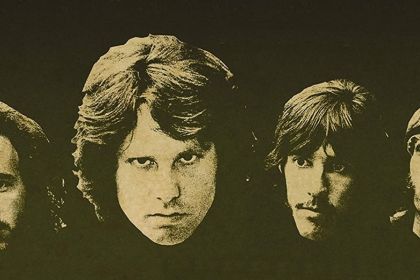SONGWRITER
Reelin' In the Years: the tandem of effective lyrics and one of the best guitar solos of all time

Steely Dan LP cover
Reelin' In the Years is one of the most successful tracks of the American jazz-rock band Steely Dan who are known for their meticulous approach to the recording process and general lack of interest in live performance. Composed for their 1972 debut album Can't Buy a Thrill, the song was released as a second single and hit the major charts.
Special attention is paid to the Reelin' In the Years guitar part that appears on numerous best guitar solos of all time lists. It was also praised by the Led Zeppelin guitarist Jimmy Page as his favorite solo. The section was recorded by session guitarist Elliott Randall, reflecting Steely Dan's usual practice of recruiting outside musicians to record albums.
The well rhymed Reelin' In the Years lyrics tackles the narrator's feelings on the recent romantic breakup, and the catchy chorus lists a series of questions addressed to his ex-girlfriend. Being the best-known track in the band's repertoire, the song does not particularly delight its authors Donald Fagen and Walter Becker who consider it "dumb but effective" and "no fun".
Listen to Reelin' In The Years by Steely Dan:
Compositionally, the song's intro, choruses, solo, and outro are based on a simple chord alternation written in Lydian mode. In the harmonic analysis of these sections, the scale degrees (denoted with Roman numerals) show the following progression in G Lydian: G–A or I–II.
The same combination of major triads rooted in the first and second degrees of the Lydian scale appears in many popular songs including Fleetwood Mac's Dreams, R.E.M.'s Man on the Moon, Michael Jackson's Human Nature, Tears For Fears' Head Over Heels, and Jane Says by Jane's Addiction. The harmonic analysis of all aforementioned tracks is given in this article on the Lydian mode structure.
Four lines of the Reelin' In the Years verses are performed with the following chord progressions written in the key of D major:
- F♯m–D–A–Bm–A or iii–I–V–vi–V
- D–A–Bm–A or I–V–vi–V
- G–D–F6–A or IV–I–♭III–V
- D–A–Bm–A or I–V–vi–V
Note that the F6 added-sixth chord does not belong to the Ionian mode and appears here to provide chromatic movement from the mediant to supertonic scale degree—a technique commonly found in the blues genre.
Learn more about the structure of these diatonic musical modes explained through the harmonic analysis of popular songs in the following articles:
- Popular songs using Lydian mode
- Lydian mode: famous examples of the Lydian major scale throughout the music history
- 6 songs to unpack Ionian mode and the major scale
- 9 Beatles songs that combine harmonic major with Ionian mode
- Sugaree: Jerry Garcia's song referencing his lyricist's criminal past
- D'yer Mak'er: meaning of Led Zeppelin's most controversial song
- Seven Seas of Rhye: song of imaginary land brought to life by Ionian and Mixolydian modes
- Tumbling Dice: hundred reels of tape for a messy Rolling Stones mix
- Marie Laveau: ballad of the legendary Voodoo Queen
- Statesboro Blues: no one can sing the blues like Blind Willie McTell



